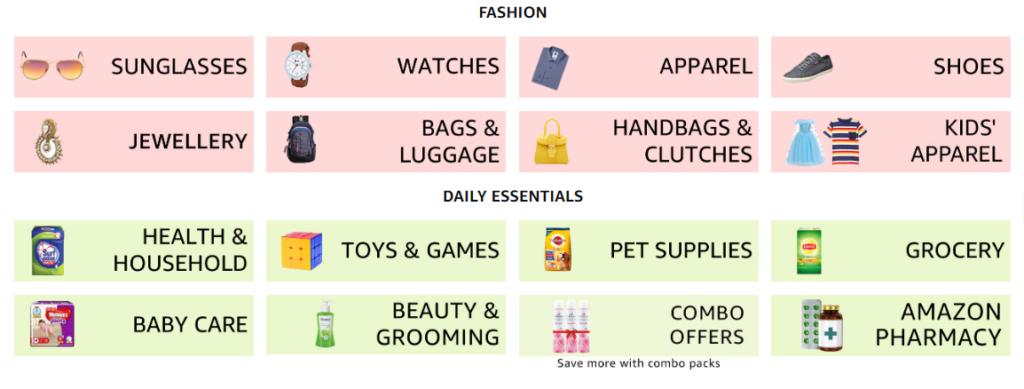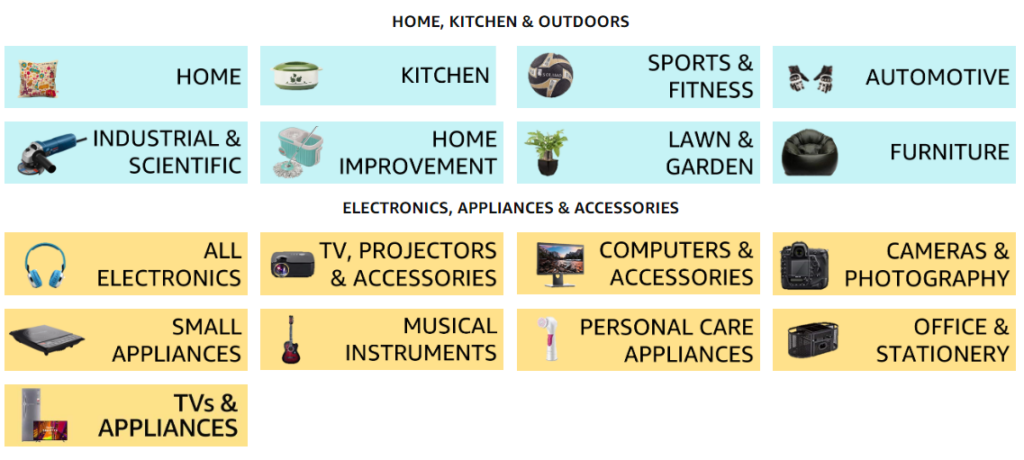Beyond building the basic website, there are the five key components of an e-commerce site. Figured for those that might have bought things online, they know what a shopping cart is and what it does. What many have never seen is what is under the hood and what you have to do at the basic level from the full out-of-the box e-commerce storefront to the customized built from scratch version.
Table of Contents
Components of E Commerce
These are some important components of e commerce:
- Products Catalog
- Categories
- Promotions
- Shipping and Taxes
- Payments and Checkout
- Product or Service
- Place
- Marketing
- Orders
- Billing and Collections
- Fulfillment
- Returns
- Warranty Claims
Products Catalog
This is obviously the core of the storefront because it is the catalog of what you sell. You need to have good images and many storefronts allow for lots of options which you could go crazy with so be careful. Options are good with things like T-Shirts where you have a product and need specifications to fulfill the order.
Categories
These go with the products catalog and help you organize the products. It can get very cumbersome and if you will remember the earlier days of Amazon.com they had tabs for categories which worked well when they had just books, music and DVD’s. As they expanded their tab structure got out of control which you can see below:



It is a lesson in carefully structuring your catalog in a way that people can find things easily and quickly so they add it to their cart because you still to get them to put in their credit card.
Promotions
The whole purpose of promotions is to draw customers back to your store and get them to buy. The concept of things going on sale is old, as people have been selling things. We all love a sale and some of us even live for them, which is why promotions are key in customer retention and acquisition. Many times customers will find your site and buy something, but the big challenge is bringing them back and learning their behavior (personalization is for another post).
Shipping and Taxes
This is probably the most boring and mundane but if you don’t do this right a few things will happen – you will get stuck with the shipping bill and lose money, you will estimate taxes wrong or not add them in and lose money.
Are you getting the picture? You will need to get the right shipping partners that fit your products and deliver to where your customers are. You will also need to check if you have to pay taxes locally and also if you ship to certain states. It is a complicated subject, and I would recommend this great article from Startup Nation on e-Commerce Sales Tax.
Payments and Checkout
This is the last step for buyers, and for integrators and website developers the most challenging. You are simultaneously dealing in three separate parties merchant account provider, secure certificate provider and shopping cart solution and if one thing does not work correctly the whole site is useless.
You can also have fingers pointing at other providers when are trying to resolve an issue. Furthermore, you need to make sure you have the accounts tested and working and when testing turn on the logs and error tracking.
The last thing you want if for errors in the checkout process for a paying customer. If they get an error once, they might re-try and check their stuff. If it happens the second time, you will definitely lose them.
Product or Service
If you would like to sell something to a customer, at the very core of the matter is the something itself. You must have a product or service to offer.
The product can be anything from ball bearings to back rubs. You may get your products directly from a producer, or you might go through a distributor to get them, or you may produce the products yourself.
Place
You must also have a place from which to sell your products. Place can sometimes be very ephemeral — for example, a phone number might be the place. If you are a customer in need of a massage, if you call “Judy’s Massages, Inc.” on the telephone to order a massage, and if Judy shows up at your office to give you a massage, then the phone number is the place where you purchased this service.
For most physical products, we tend to think of the place as a store or shop of some sort. But if you think about it a bit more, you realize that the place for any traditional mail order company is the combination of an ad or a catalog and a phone number or a mailbox.
Marketing
You need to figure out a way to get people to come to your place. This process is known as marketing. If no one knows that your place exists, you will never sell anything.
Locating your place in a busy shopping center is one way to get traffic. Sending out a mail order catalog is another. There is also advertising, word of mouth and even the guy in a chicken suit that stands by the road waving at passing cars.
Orders
You need a way to accept orders. At Walmart, this is handled by the checkout line. In a mail order company, the orders come in by mail or phone and are processed by employees of the company.
Billing and Collections
You also need a way to accept money. If you are at Walmart, you know that you can use cash, check or credit cards to pay for products. Business-to-business transactions often use purchase orders.
Many businesses do not require you to pay for the product or service at the time of delivery, and some products and services are delivered continuously (water, power, phone and pagers are like this). That gets into the whole area of billing and collections.
Fulfillment
You need a way to deliver the product or service, often known as fulfillment. At a store like Wall-mart, fulfillment is automatic. The customer picks up the item of desire, pays for it and walks out the door. In mail-order businesses, the item is packaged and mailed. Large items must be loaded onto trucks or trains and shipped.
Returns
Sometimes customers do not like what they buy, so you need a way to accept returns. You may or may not charge certain fees for returns, and you may or may not require the customer to get an authorization before returning anything.
Warranty Claims
Sometimes a product breaks, so you need a way to honor warranty claims. For retailers this part of the transaction is often handled by the producer.
Customer Service and Technical Support
Many products today are so complicated that they require customer service and technical support departments to help customers use them. Computers are a good example of this sort of product.
Ongoing products like cell phone service may also require ongoing customer service because customers want to change the service they receive over time. Traditional items (for example, a head of lettuce), generally require less support than modern electronic items.
FAQs Section
What are the components of e commerce?
The following are the components of e commerce:
1. Products Catalog
2. Categories
3. Promotions
4. Shipping and Taxes
5. Payments and Checkout
6. Product or Service
7. Place
8. Marketing
9. Orders
10. Billing and Collections.

